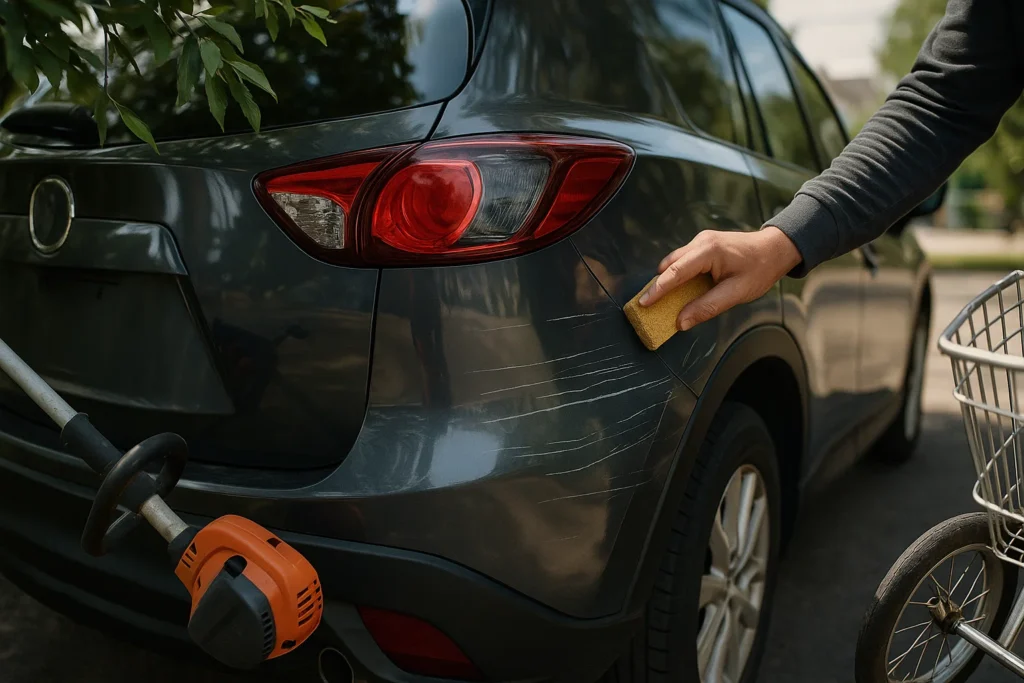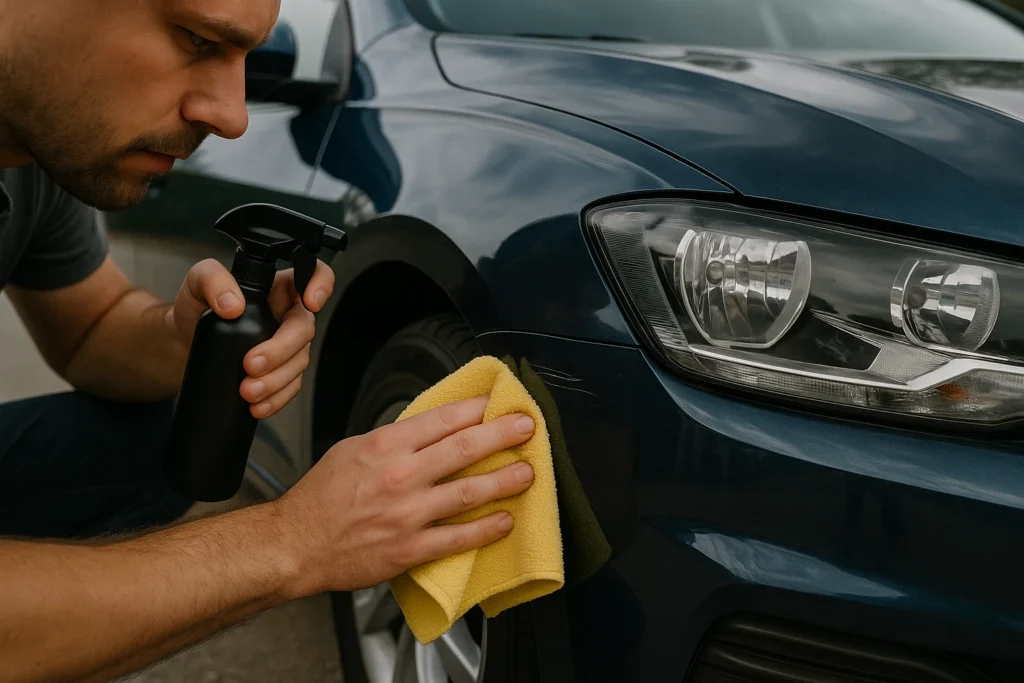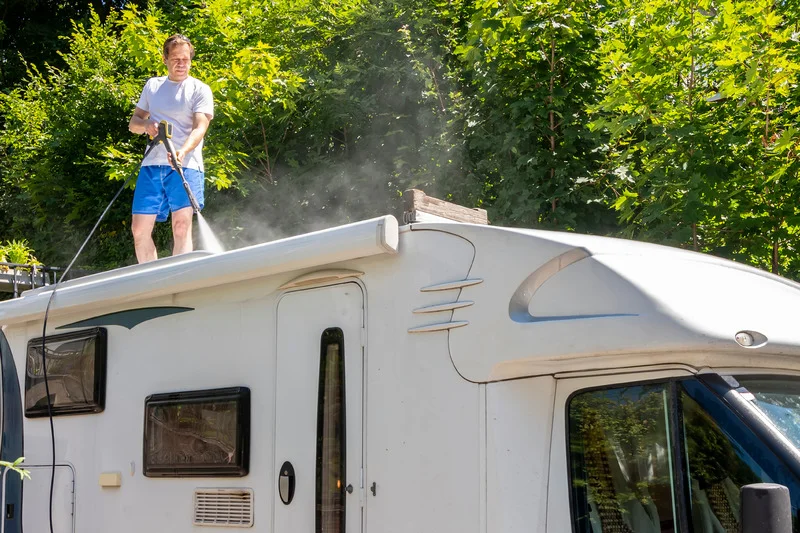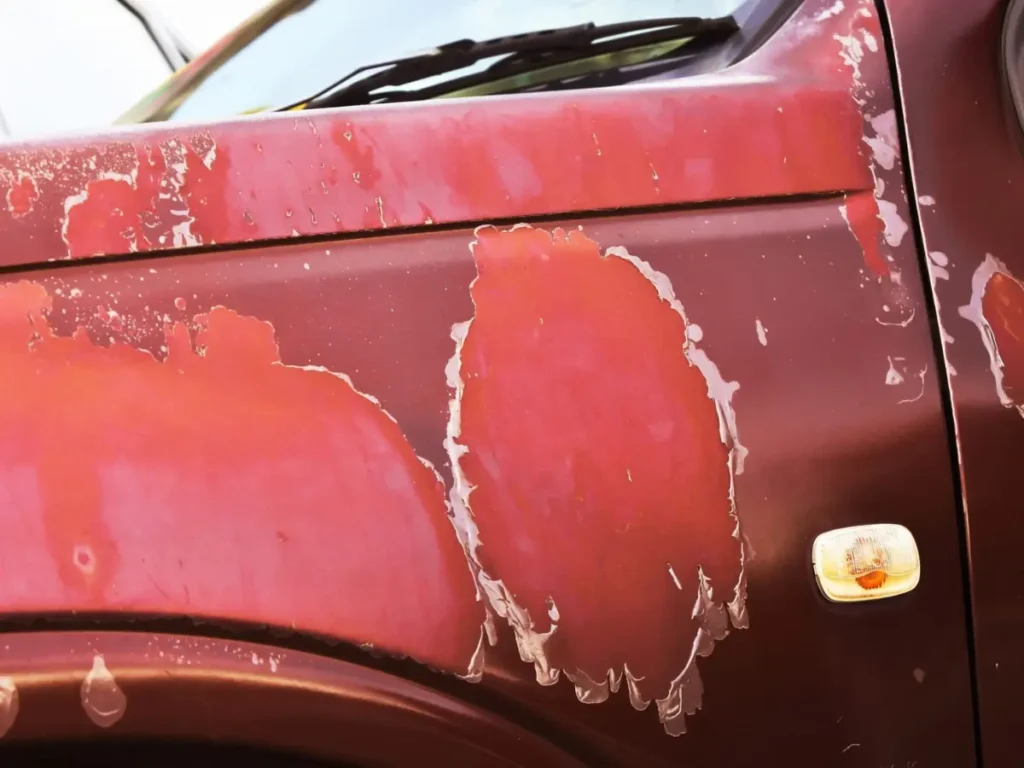Scratch on the car is one of the most annoying situations that car owners face because it harms both the appearance and the value of their car. When you see scratches on the paint of your vehicle and you start wondering whether the car detailing can help you eliminate them or not, the answer depends on the type and the severity of the scratch, and on the Detailing techniques that can be applied.
However, removing or minimizing the visibility of scratches is a significant objective, although not every scratch can be fully repaired through detailing. This article will discuss in detail how detailing can affect the various types of car scratches, what detailing methods can accomplish scratch repair and when it is necessary to take a car to a professional body shop.
Understanding Car Scratches
In order to comprehend the possibilities and boundaries of car detailing in repairing scratches, one has to know how car paint layers lead to the occurrence of scratches. These are layers that can be scratched and scratches are usually categorized according to their depth:
- Light or Clear Coat Scratches: These are the scratches that are light and do not penetrate the paint beneath. They usually look like fine lines, and usually occur when they come into contact with soft objects, improper washing or when there is a mild abrasion.
- Moderate Scratches: These penetrate the clearcoat, and they may affect the basecoat but do not expose the primer or the metal. They are bigger and may be brown or an off spot.
- Deep Scratches: These are scratches that are done to the primer or, in some cases, even the metal underneath the primer and show a different color or bare material. They are most commonly made by sharp objects or stronger impacts.
Depending on the depth of the scratch, car detailing may or may not remove or reduce the visibility of the scratch.
Common Causes of Car Scratches
Car scratches may be caused by various common experiences and environmental conditions. Knowing the reasons can enable you to take preventative steps to ensure that your vehicle’s paintwork is safe:
- Inappropriate Washing: Washing with an unclean or abrasive towel, aggressive brushes or without first removing the dirt can leave fine scratches or swirl marks in the clear coat.
- Road Debris: Stones, gravel and other road debris thrown up by driving can chip or scratch the paint surface, particularly when traveling at a higher speed.
- Environmental Factors: Branches of trees and bushes as well as animals rubbing their bodies against cars, can cause them to get scratched. Also, the weather, like hail, sandstorms, or flying debris in strong winds, can damage the paint.
- Keying or Vandalism: Intentional damage, like key scratches or other acts of vandalism are common cause of deep and unsightly paint damage.
- Parking Lot Incidents: Scratches may occur when car doors open into your vehicle or when shopping carts run into your car, or whenever you accidentally bump into curbs and walls.
- Negligence: Leaving your car unattended in harsh conditions without protective layers and coating puts your car at risk of getting scratches and other damage on the surface.

How Car Detailing Deals with Scratches
When performing an exterior detail, the professionals will focus on the paint restoration and improvement. As far as scratches are concerned, the most important detailing procedures are polishing and paint correction, based on the use of abrasive materials and mechanical force to smooth the paint.
Polishing and Paint Correction
Polishing is the art of removing a microscopic layer of clear coat with the fine abrasives in a compound or polish. In this way, the physical removal of the light scratches that are on the surface only becomes possible. Swirl marks and oxidation also get smoothed out this way, restoring the paint to its previous state of depth of color and shine.
- Paint correction is a more extensive process of polishing and can consist of multiple steps with progressively finer abrasives to produce a paint finish that is essentially free of flaws.
- It is peculiar to the clear coat imperfections, haze and light- moderate scratches.
- Modern dual-action polishers are efficient and safe to use on sensitive painted surfaces and this is the reason why detailers prefer to use them.
Polishing can also lead to the total removal of scratches or make the scratches almost invisible in case of light scratches that are only on the clear coat. When there are moderate scratches that cut through the base coat, polishing and paint correction can help a lot in minimizing the appearance of the scratches.
Glazing
Some detailers also use glazes in addition to the removal of scratches; these are specialty products that fill in very fine scratches and swirl marks temporarily. Glazing has no physical effect on the scratch but covers it up by filling in the minute cracks, giving it a smoother and glossier look. However, the glaze is not permanent and will wear out after some time, requiring reapplication.
Waxing and Sealants
It is usual practice to apply a coat of wax or synthetic sealant to the paint after polishing to protect it and keep the rejuvenated finish. Despite that, wax provides depth and gloss and aids in guarding against the contaminants in the environment, but it does not remove the already existing scratches. It is largely preventive in its operations.
Ceramic coating and paint protection films
High-end coatings like the ceramic coatings or Paint protection films (PPF) can be included in detailing or as a post detailing product. These products offer long-lasting protection that aids in resisting scratches. It is only used to protect and not to heal any damage that might already be there. Application of these protective layers on a freshly polished paint surface maximizes gloss and life.
When Can Car Detailing Fix Scratches?
The success of detailing in the removal of scratches also depends greatly on the type of scratches:
- Light (Clear Coat) Scratches: These are the scratches that can be easily fixed with the aid of detailing. The surface can be completely restored by polishing and paint correction, which removes the upper layer of the clear coat that is affected. The waxing and sealing are applied after polishing to maintain the new smoothness.
- Medium Scratches (Base Coat Penetration): They can be reduced in appearance by attention to detail, but they are not normally removable since the paint layer is scribed into. It may involve several polishing and touch-up paint jobs in order to match the scratch with the other paint.
- Deep Scratches (Primer or Metal): They are not detailable. Deep scratches will need to be filled, primed, touched up with paint, clear coated again, and, in some cases, refinished by a professional body shop.
The Limitations of Car Detailing for Scratch Repair
Although car detailing is a spectacular improvement and restoration of a lot of paint flaws, one should be aware of its limitations to prevent disappointment:
- Paint Thickness: The polishing eliminates a thin layer of the clear coat. The layers of paint applied are very thin. Thus, excessive polishing or regular rough buffing may ruin the paint and even reveal the base coat or the metal.
- Deep Damage: The detailing process does not remove and re-paint any sections of paint that have been scratched away. Hence, any scratch that has gone through the primer or the metal will need professional bodywork and re-paint.
- Plastic and Trim: Scratches on plastic bumper covers or trim pieces may require different repair methods, as detailing compounds and polishes designed for metal and painted surfaces may not be effective or safe.
- Surface Texture: Roughness or rust on the surface can cause scratches that detailing cannot fix unless further repair is performed.
The knowledge of those limitations is vital in making decisions on whether detailing is the right answer or professional collision repair is a necessity.
Can You DIY Scratch Removal with Detailing Products?

There are a variety of detailing products that consumers can use, such as scratch removers, polishing pads and compounds. Although it is possible to repair scratches yourself in the case of light-to-moderate scratches, there are many factors you need to take into account:
- Skill and Experience Required
Misuse of polishers or abrasives can be very easy to be more destructive (e.g., paint burn-through or new scratches) unless used properly.
- Use of the appropriate Product
There must be the appropriate abrasive level and technique that matches the depth of the scratch.
- Test in Small Hidden Places
Before a wider application, it is always recommended that one test the products in a small, hidden area.
- Read Instructions
Use recommended levels and methods of applications for the recommended applications and do not exceed applications.
In case of doubt or when you have a valuable or newer car, it is recommended that you take it to a professional detailer to be assessed and applied.
Cost Comparison: DIY Detailing vs. Professional Scratch Repair
When it comes to scratch repair, costs can vary widely depending on the damage severity and the method chosen. Understanding the financial implications of DIY versus professional repair helps you make informed decisions.
| Scratch Severity | DIY Detailing Cost | Professional Repair Cost | Notes |
| Light Surface Scratch | $15 – $50 | $70 – $150 | DIY kits good for minor scratches; professionals offer better finish and durability |
| Moderate Scratch (Base Coat) | $30 – $100 (additional products needed) | $150 – $300 | Professionals use polishing and touch-up paint for best results |
| Deep Scratch (Primer/Metal) | Not recommended | $300 – $1,000+ | Requires sanding, repainting, and refinishing |
| Full Panel Repair | Not feasible | $500 – $2,500+ | Extensive damage needing full panel repaint or replacement |
DIY detailing is affordable when it comes to minor scratches, but it might not be durable and of high quality. Professional repair is more expensive but ensures lasting and smooth outcomes that are effective in repairing moderate to severe scratches. The location, type of vehicle, and the details of damage may influence prices.
Conclusion
Car detailing can definitely repair most scratches, especially the ones that are confined to the clear coat, the thinnest layer of paint on your car. Light scratches and swirls can be eliminated completely with professional polishing and paint correction, and the smoothness and shine of the paint surface can be restored. In the case of moderately deep scratches, detailing can have a significant effect on the look of the scratches and still not remove them all.
But there are deep scratches that go through to the primer or metal, and this will need special bodywork and painting, which detailing will not be able to accomplish. Before deciding on a repair method, it is important to evaluate the severity of the scratch realistically.
FAQs
No, car detailing is an effective fix for light scratches that do not even reach the clear coat. Scratches that go to the base of the paint or metal require the services of bodywork and repainting.
Polishing will be done using a light abrasive material to remove a thin layer of the clear coat to eliminate the scratches on the surface, and the polishing will also bring the smooth paint to shine.
Waxing does not eliminate scratches; it only covers them and can conceal very fine scratches and swirl marks and provide gloss.
Polishing is not very dangerous as long as you use proper techniques, as well as the instructions on the product, and do not take to aggressive buffing; however, inexperienced use can easily cause damage to paint.
Every 4-6 months, professional detailing, frequent washing and waxing contribute to preserving the condition of the paint and reducing the number of scratches visible to the naked eye.
No, glazes cover up a temporary mask of the minor scratches and provide a gloss, but they will wear out and not cover up paint damage.




